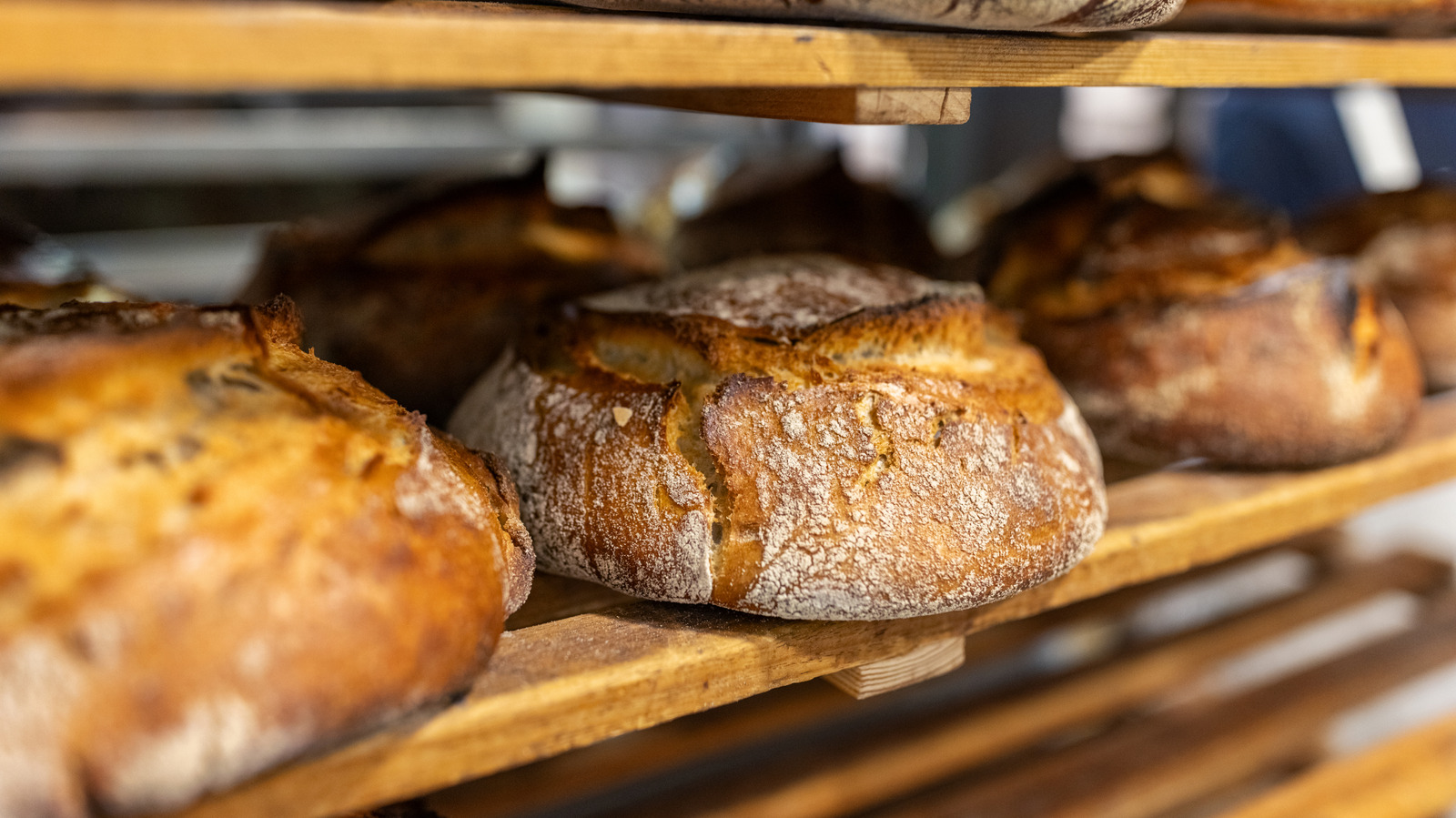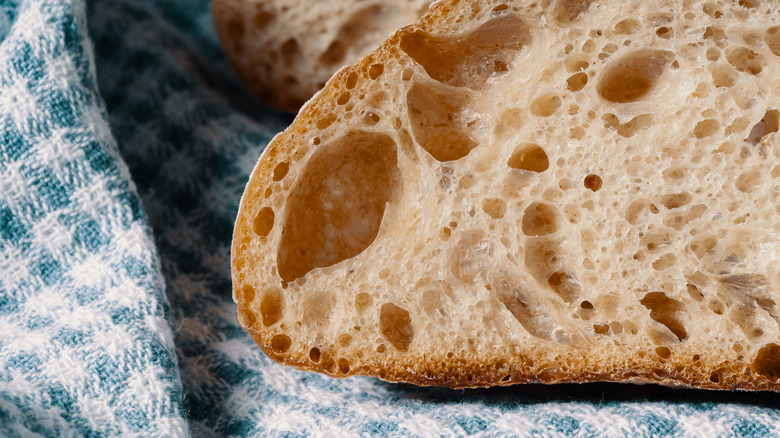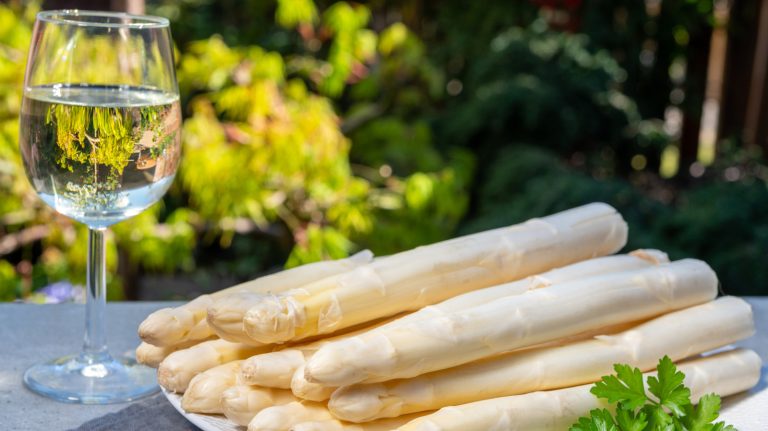In recent years, sourdough has become the indisputable king of the artisan bread world. Though it’s been around for millennia — the earliest recorded sourdough was made in Ancient Egypt five thousand years ago, when wild yeast spores were accidentally allowed to germinate in bread dough that had been left out — sourdough most recently came back into fashion in the U.S. during the pandemic, when house-bound bakers decided to take on the classic recipe. But while most of us know sourdough for its gorgeous crust, airy, yet chewy crumb, and signature tangy taste, you might have never stopped to wonder exactly where that flavor comes from. Well, if you’re wondering now, let us enlighten you.
Sourdough is something of a scientific wonder, a brilliant example of a baker’s ability to harness biology to create something truly delicious. The “sour” in sourdough comes from the fermentation of the dough, which creates lactic acid bacteria and wild yeast (as opposed to commercial dried yeast used in other types of bread) which are found in the sourdough starter. The lactic acid lends a naturally tangy flavor that’s intensified by the long fermentation time — usually overnight, but often even longer — while acetic acid adds a sharper, more vinegary note. The wild yeast, meanwhile, develops slower than its commercial counterpart, producing a deeper, more nuanced flavor profile.
How to up the sourness of your sourdough
Once you understand what exactly gives sourdough its signature flavor, you can start to have some fun. Making your own sourdough is a surprisingly simple process (not to mention immensely satisfying) and it’s equally easy to start modifying the method to customize your bread to your specific tastes. If you’re a lover of that intense sour flavor, for example, you can amp it up by bringing the temperature of the dough down as it ferments. The fridge is your friend, here. Simply leave your dough inside it (covered, to avoid dehydrating it) as opposed to out at room temperature (like you would for most other yeasted doughs). The chilly temperatures will encourage more of that acetic acid to develop, bringing a more pronounced sourness out in your loaf. Using less water will help, too. Acetic acid prefers a lower hydration dough, which means that there’s more flour than water in the dough formula. Keep things around 50% to 60% hydration for the best results.
The type of flour you use can also have a significant effect on the final flavor of your dough. Using heartier flours like rye or whole grain wheat can help more effectively feed the wild yeast, helping it to ferment more. More fermentation means a much tangier sourdough, so try experimenting with different grains until you find a blend that works for you, balancing taste, texture, and consistency.
You could try adding in unorthodox ingredients
Of course, while it’s simple to change the flavor of your sourdough by swapping out certain ingredients, like the type of flour, or by adjusting the quantities of water or the amount of starter you use, you can also enhance the natural flavors of your bread by adding a couple of slightly more unorthodox ingredients. For an especially tangy final product, why not try adding yogurt to your dough? Incorporating it is a breeze; just add a couple of tablespoons to your starter before you mix everything together. As an added bonus, yogurt is acidic and will bring the general pH of your dough down, encouraging those acetic and lactic acids we mentioned earlier to do their thing.
If you want to pare back that acidity, though, consider adding a little honey instead. We do really mean a little, here — honey has a very high sugar content and adding too much sugar can be a critical mistake, as it can dry out the yeast cells, hampering your dough’s fermentation. Adding just a little, though, will result in a wonderfully balanced flavor — not too sour, not too sweet. Plus, it’ll up the dough’s hydration, making for a beautifully airy crumb, and a better crust than you might otherwise achieve.







